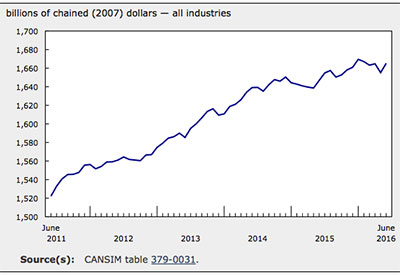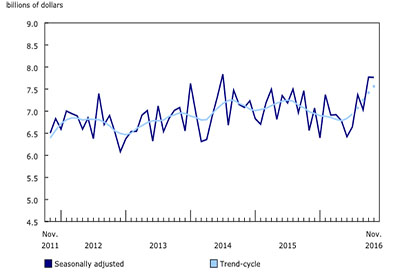How the Canadian Electrical Code, Part I Is Amended

William Burr
I am often asked how new rules get in the Code and how one could go about amending a code rule. All of these procedures are outlined in Appendix C of the Canadian Electrical Code, Part I. However, being written as a standard it is sometimes a struggle to follow.I trust this article easily explains the process.
To start this discussion we need to understand the structure of the Technical Committee of the Canadian Electrical Code, Part I (TC), which is responsible for the development of the Code.
The TC has a maximum of 41 members, consisting of
• chair
• vice-chair
• executive committee (EC) elected by the members
• non-voting project manager appointed by the Canadian Standards Association (CSA)
• sub-committee (SC) for each section of the Code
• Regulatory Authority Committee (RAC).
The chair of the TC, with the advice of the EC appoints a chair for each section SC from among the TC members, and the SC chairs appoint the members of their SC. Anyone representing the following major interests can apply to be a member of a sub-committee:
• inspection authorities
• manufacturers
• employers
• employees
• consultants
• utilities
• testing laboratories
• underwriters
• fire marshals
• primary and secondary industries
• respective code-making panels of the National Electrical Code
• users
The 41 regular members of the TC are drawn from three main interest groups in conjunction with the following balanced matrix.
Technical Committee Composition

• The regulatory authorities represent the various provincial, territorial and municipal electrical inspection authorities across the country.
• Owner/operator/producers represent electrical manufacturers, electrical installation designers and installers and electrical installation user groups.
• The general interest category is drawn from fire chiefs, electric utilities, other codes and standards committees, fire insurers, labour, issuers of building codes, and educators groups.
All these members are nominated by the organization they represent and are approved for membership by the executive committee. I will discuss the function of the RAC later in this article.
The TC meets once a year.Additional meetings may be called if warranted. However, much of the business of the TC and Section SCs takes place between meetings through correspondence and electronic media.
Anyone can propose a new Code rule or an amendment to the project manager at CSA using the form contained inAppendix C of the Code.
The proposal must be specifically worded and must:
• improve safety
• address new technology
• correlate with product standard requirements
• correlate with other relevant standards, or
• clarify existing wording
Supporting information for the proposal must also be supplied.
The PM assigns a subject number to the proposal and sends it to the relevant section SC chair and alsosubmits it for public review on the CSA website. The SC chair distributes the proposal to the subcommittee members with the chair’s comments for discussion. The sub-committee deliberates the proposal, along with any public review comments, and may recommend it, amend it, keeping the original intent, or reject the proposal. The SC chair then provides a report with the recommendations of the sub-committee to the TC for letter ballot.
If the letter ballot is affirmed by more than 50% of the total voting membership with no negative votes, it is approved and, except for a recommendation of rejection, will be published in the next version of the Code. In the case of negative votes, the chair of the SC in consideration of the negative votes has a number of courses of action:
• resolve the negative by editorial changes or further explanation
• rule the negative vote non-germane if it is not accompanied by supporting comments, if it doesn’t deal with the intent, the procedure, technical content or conflict with another rule or standard, of the proposal
• the negative vote and supporting reasons are not considered to be relevant to the original proposal
• the negative vote can be ruled non-persuasive if the reasons have previously been discussed by the subcommittee as outlined in the subcommittee report.
If there are any negative votes that cannot be resolved by the SC chair, then the subject is put on the agenda of the next meeting of the TC.
When a letter ballot is on the agenda of a meeting, the subject is introduced by the chair of the SC who explains the deliberations of the SC and the negatives that couldn’t be resolved. An open discussion takes place followed by a vote. If the subject is affirmed by a two-thirds majority, with no Regulatory Negative, then the subject is approved.
Whoa! What’s a Regulatory Negative? Well, I mentioned earlier that I would discuss the Regulatory Authority Committee later in this article.
The RAC comprises the regulatory authority representatives on the TC and is essentially the guardian of the legal framework of the Code. Since the Code is a legally adopted document by provincial, territorial, and municipal governments, the regulatory authorities need to make sure that the wording of any rules are suitable for enforcement.If any RAC member feels that a proposal for amendment to the Code is not enforceable in their jurisdiction, they may vote a Regulatory Negative. This member must declare that their negative vote is a Regulatory Negative as opposed to a negative for any other technical reason.The subject is then referred to the Regulatory Authority Committee, which must develop a revised amendment carrying the same intent, in terms of safety and technical requirements, and submit it to the Section SC for further consideration.It must be noted that this is not a veto, but an alternative wording with the same intent as the original proposal.
Note: information for this article has been sourced from The Canadian Electrical Code, Part I, published by CSA Group.
William (Bill) Burr is the former Chair of the Canadian Advisory Council on Electrical Safety (CACES), former Director of Electrical and Elevator Safety for the Province of BC, and former Director of Electrical and Gas Standards Development and former Director of Conformity Assessment at CSA Group. Bill can be reached at Burr and Associates Consulting billburr@gmail.com.

















